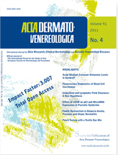
ACTA DERMATO-VENEREOLOGICA
Scope & Guideline
Elevating the discourse in Dermatology and Venereology.
Introduction
Aims and Scopes
- Clinical Dermatology:
The journal emphasizes clinical studies that explore the diagnosis, treatment, and management of various dermatological conditions, including psoriasis, atopic dermatitis, and skin cancers. - Translational Research:
ACTA DERMATO-VENEREOLOGICA publishes studies that bridge basic science and clinical applications, aiming to translate laboratory findings into effective treatments for skin diseases. - Patient-Centered Research:
Research focusing on patient-reported outcomes, quality of life, and the psychosocial impacts of dermatological conditions is a key area, highlighting the importance of patient perspectives in treatment. - Innovative Therapies:
The journal frequently features studies on novel therapies, including biologics and targeted treatments, assessing their efficacy and safety in managing chronic skin conditions. - Epidemiological Studies:
Epidemiological research exploring the prevalence, risk factors, and comorbidities associated with dermatological diseases is a vital component of the journal's scope.
Trending and Emerging
- Biologic Therapies and Immunotherapy:
An increasing number of studies are dedicated to the efficacy and safety of biologic therapies for chronic skin conditions, particularly psoriasis and atopic dermatitis, reflecting a growing interest in personalized medicine. - Impact of Mental Health on Dermatological Conditions:
Research exploring the intersection of mental health and dermatological diseases is gaining traction, emphasizing the psychosocial burden of conditions like psoriasis and atopic dermatitis. - Teledermatology and Digital Health Innovations:
The COVID-19 pandemic has accelerated the adoption of teledermatology and digital health solutions, with a surge in studies assessing their effectiveness and patient satisfaction. - Environmental and Lifestyle Factors:
Emerging research is focusing on the impact of environmental factors, such as pollution and lifestyle choices, on skin health, particularly in relation to atopic dermatitis and psoriasis. - Microbiome Studies in Dermatology:
There is a growing emphasis on understanding the role of the skin microbiome in health and disease, with studies investigating its influence on conditions like acne, eczema, and psoriasis.
Declining or Waning
- Traditional Therapies:
There is a noticeable decline in studies focusing on conventional treatments for dermatological conditions, as the field shifts towards exploring new and innovative therapies. - Histopathological Studies:
Research solely centered on histopathological findings without accompanying clinical or translational insights has decreased, reflecting a broader move towards integrative approaches. - Dermatological Surgery Techniques:
While still relevant, the frequency of publications on surgical techniques and outcomes in dermatology appears to be decreasing, possibly as attention shifts to non-invasive treatment modalities. - Generalized Dermatological Conditions:
Research on generalized conditions not associated with specific pathologies, such as simple eczema or common dermatitis, seems to be receiving less emphasis in favor of more complex and chronic conditions. - Basic Science in Dermatology:
There is a reduced emphasis on purely basic science research in dermatology, as the journal increasingly prioritizes studies with direct clinical implications.
Similar Journals
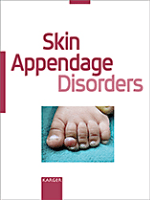
Skin Appendage Disorders
Pioneering Research for Better Skin Health SolutionsSkin Appendage Disorders, published by KARGER, is an esteemed academic journal focusing on the intricate realm of dermatology, particularly the structure and function of skin appendages. Established in 2016 and projected to continue through 2024, this journal has swiftly gained recognition, securing a respectable Q2 ranking in the field of Dermatology as of 2023, and achieving a Scopus rank of 76 out of 142 in the same category. With an ISSN of 2296-9195 and an E-ISSN of 2296-9160, the journal presents a platform for innovative research and clinical findings that address the multifaceted aspects of skin appendage disorders. Researchers, practitioners, and students will find significant value in its open access model, which encourages widespread dissemination of knowledge and fosters collaboration within the dermatological community. By publishing high-quality peer-reviewed articles, Skin Appendage Disorders aims to elevate the understanding of dermatological conditions and contribute to advancements in therapeutic practices, making it a vital resource for those dedicated to skin health.

ARCHIVES OF DERMATOLOGICAL RESEARCH
Exploring Breakthroughs in Dermatological ScienceArchives of Dermatological Research is a premier journal dedicated to the rapidly evolving field of dermatology, published by Springer. With a distinguished history dating back to 1971 and indexed in the top quartiles (Q1 in Dermatology and Q2 in Medicine, 2023), this journal serves as a vital resource for researchers, clinicians, and students alike. It publishes innovative findings, critical reviews, and comprehensive studies that advance our understanding of dermatological conditions and treatments. The journal's commitment to disseminating high-quality research in a field crucial to public health emphasizes the importance of advancing knowledge in skin science and therapy. For those looking to explore significant advancements in dermatology, Archives of Dermatological Research offers an invaluable platform for scholarly discourse and knowledge exchange, though it is not an Open Access journal. Based in Germany, this publication attracts a global audience and remains at the forefront of dermatological research until its anticipated converged years reaching 2024.

Acta Dermatovenerologica Alpina Pannonica et Adriatica
Championing Excellence in Medical PublishingActa Dermatovenerologica Alpina Pannonica et Adriatica, published by the Dermatovenereological Society of Slovenia, stands as an important peer-reviewed journal in the fields of dermatology, infectious diseases, and general medicine. Established in 1994, this journal has built a solid reputation over the years, achieving a Q3 ranking in 2023 within its respective categories, which highlights its contribution and relevance in the academic community. With an ISSN of 1318-4458 and E-ISSN of 1581-2979, it aims to disseminate new research findings, review articles, and case reports that impact clinical practice and promote knowledge in dermatovenereology throughout the Alpine and Adriatic regions. Located in Ljubljana, Slovenia, the journal actively supports open access to its publications, ensuring that valuable insights are available to a global audience, which is crucial for advancing medical research and practice. The dedication to quality and scientific rigor makes Acta Dermatovenerologica Alpina Pannonica et Adriatica a must-read for researchers, practitioners, and students aiming to stay informed on the latest advancements in dermatology and related disciplines.
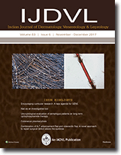
Indian Journal of Dermatology Venereology & Leprology
Elevating Standards in Dermatological and Venereological ResearchThe Indian Journal of Dermatology Venereology & Leprology (IJDL) is a premier open-access journal dedicated to the fields of dermatology, venereology, and leprology, published by SCIENTIFIC SCHOLAR LLC since 2004. With a rich historical background dating back to 1976, the journal has established itself as a reputable source for high-quality research and clinical advancements in these disciplines. The IJDL is recognized for its academic rigor, boasting a 2023 category quartile ranking of Q2 in Dermatology and Q3 in Infectious Diseases, indicating its significant contribution to these fields. With an accessible online platform, researchers, practitioners, and students alike can readily explore the latest studies, case reports, and reviews that address key issues affecting public health, particularly in India and beyond. The journal serves not only as a repository of valuable knowledge but also as a vital forum for the exchange of ideas, fostering collaboration and innovation among professionals dedicated to enhancing skin health and combating infectious diseases.
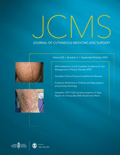
JOURNAL OF CUTANEOUS MEDICINE AND SURGERY
Exploring breakthroughs in cutaneous medicine and surgery.The Journal of Cutaneous Medicine and Surgery is a premier publication in the fields of dermatology and surgery, dedicated to advancing the scientific understanding of skin-related conditions and surgical techniques. Published by SAGE Publications Inc, this esteemed journal features a rich repository of peer-reviewed research, reviews, and clinical studies, ensuring that it remains at the forefront of dermatologic and surgical innovation. With an impressive impact factor and a ranking in the top quartile (Q1) of both dermatology and surgery categories for 2023, it is recognized as a vital resource for professionals, researchers, and students alike. The journal has consistently made significant contributions to the knowledge base that guides clinical practice and surgical decision-making, fostering a deeper understanding of the complexities involved in cutaneous medicine. For comprehensive updates, researchers can access this journal through SAGE’s platform, which supports the dissemination of high-quality research findings to a global audience.
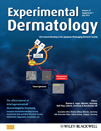
EXPERIMENTAL DERMATOLOGY
Exploring New Frontiers in DermatologyEXPERIMENTAL DERMATOLOGY, published by WILEY, is a leading journal in the fields of Biochemistry and Dermatology, with impressive rankings including Q1 status in both categories as of 2023. With its ISSN 0906-6705 and E-ISSN 1600-0625, the journal offers a reputable platform for disseminating cutting-edge research and insights into skin biology and related health issues. As a pivotal resource for professionals, researchers, and students alike, EXPERIMENTAL DERMATOLOGY includes a broad scope of topics, fostering a deeper understanding of dermatological conditions and enhancing new therapeutic strategies. The journal’s distinguished performance is highlighted by its Scopus rankings, which place it at the 91st percentile in Medicine-Dermatology and the 65th in Biochemistry. While not an open-access publication, the journal remains committed to ensuring the accessibility of crucial developments within the dermatological community worldwide, facilitating the advancement of both clinical practice and academic inquiry.
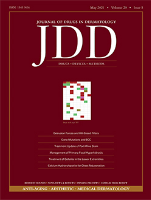
Journal of Drugs in Dermatology
Enhancing understanding of skin health and drug efficacy.Journal of Drugs in Dermatology, an esteemed publication in the field of dermatology, serves as a vital resource for researchers, clinicians, and healthcare professionals dedicated to advancing knowledge and practices in skin-related therapies and treatments. Established in 2002 and published in the United States, this journal focuses on a wide range of topics pertinent to dermatological pharmacology and therapeutics, reflecting contemporary scientific advancements and innovative approaches to patient care. With a strong presence in Scopus rankings, situating it at rank #73 within the dermatology category, and achieving a commendable Q2 quartile classification in both dermatology and general medicine categories, the journal is committed to enhancing understanding of drug efficacy and safety in dermatological conditions. While the journal maintains a traditional access model, its impact factor underscores its significance in the research community, supporting the ongoing dialogue between academia and clinical practice. We invite professionals and students alike to explore the latest findings and contribute to the progressive discourse on dermatological treatments through this important publication.

Turk Dermatoloji Dergisi-Turkish Journal of Dermatology
Empowering skin health through innovative research.Turk Dermatoloji Dergisi-Turkish Journal of Dermatology, published by Wolters Kluwer Medknow Publications, is a prominent platform dedicated to advancing the field of dermatology in Turkey and beyond. With an ISSN of 1307-7635 and an E-ISSN of 1308-5255, this journal plays a vital role in disseminating contemporary research and clinical advancements within the domain. While it is positioned in the Q4 quartile of dermatology journals, its contributions are essential for academics, medical practitioners, and students averse to the latest trends and breakthroughs in skin health. The journal assures accessibility to a broad audience, fostering knowledge exchange, collaboration, and innovation. Given its unique perspective rooted in Turkish dermatological practices, the Turkish Journal of Dermatology serves as a significant resource for enhancing professional competence and driving forward the science of dermatology through its vivid discussions and case studies. For researchers seeking a dedicated venue to publish their work or for professionals eager to stay informed, this journal is an indispensable resource in the ever-evolving landscape of dermatology.

BRITISH JOURNAL OF DERMATOLOGY
Elevating clinical practice through rigorous research.The British Journal of Dermatology, published by Oxford University Press, stands as a premier platform for advancing the field of dermatological research and clinical practice since its inception in 1892. With a strong commitment to disseminating high-quality research, this esteemed journal is currently ranked in the Q1 category for both Dermatology and Miscellaneous Medicine in 2023, reflecting its influential position in the academic landscape. As the leading journal in its field, it enjoys a robust Scopus ranking of #1 out of 142 in dermatology, placing it in the 99th percentile globally. The journal covers a wide scope of subjects pertinent to dermatology, including clinical trials, treatment innovations, and epidemiological studies, making it an essential resource for researchers, healthcare professionals, and students alike. Although it is not an open-access publication, it ensures a broad reach through institutional subscriptions, fostering knowledge exchange across the global dermatological community. Based in the heart of the United Kingdom, the British Journal of Dermatology continues to play a crucial role in shaping the future of skin health and disease management.
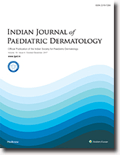
Indian Journal of Paediatric Dermatology
Advancing knowledge in children's skin health.Indian Journal of Paediatric Dermatology (ISSN: 2319-7250; E-ISSN: 2319-7269), published by Wolters Kluwer Medknow Publications, stands as a pivotal resource in the specialized field of paediatric dermatology. As a peer-reviewed open access journal since 2013, it aims to disseminate cutting-edge research, clinical practices, and innovative developments that cater to the specific dermatological needs of children. The journal provides an essential forum for collaboration among researchers, clinicians, and students, facilitating the sharing of knowledge on a wide array of topics, including skin conditions unique to paediatric populations, treatment methodologies, and advancements in dermatological care. With a commitment to enhancing the understanding and treatment of paediatric skin diseases, this journal plays a critical role in shaping best practices and informing future research directions in a rapidly evolving field.